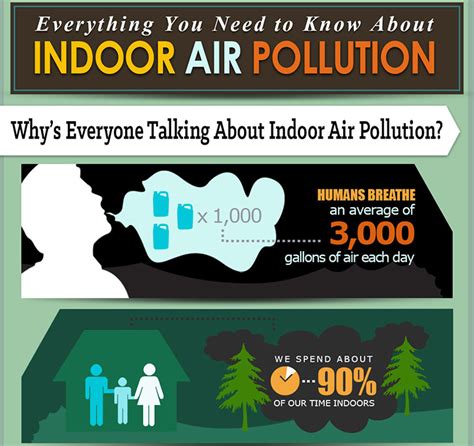Introduction
The quality of the air we breathe indoors has a profound impact on our overall health and well-being. In fact, the World Health Organization (WHO) estimates that indoor air pollution is responsible for approximately 4.3 million deaths annually. With the increasing amount of time people spend indoors, it is crucial to understand the risks associated with poor indoor air quality and take steps to improve it.

Sources of Indoor Air Pollution
Numerous factors can contribute to poor indoor air quality, including:
- Combustion appliances: Gas stoves, fireplaces, and kerosene heaters release harmful pollutants such as nitrogen dioxide, carbon monoxide, and particulate matter.
- Building materials and furnishings: Adhesives, paints, and certain types of furniture can emit volatile organic compounds (VOCs), which can cause eye, nose, and throat irritation.
- Cleaning products: Bleach, ammonia, and other cleaning agents can release irritating chemicals into the air.
- Personal care products: Hairsprays, perfumes, and lotions can release VOCs and other harmful compounds.
- Tobacco smoke: Secondhand smoke contains over 7,000 chemicals, many of which are known carcinogens.
Health Effects of Poor Indoor Air Quality
Exposure to indoor air pollution can lead to a wide range of health effects, both short- and long-term:
- Short-term effects: Headaches, dizziness, nausea, eye irritation, and respiratory problems
- Long-term effects: Asthma, allergies, heart disease, stroke, and cancer
Improving Indoor Air Quality
There are several steps individuals can take to improve indoor air quality and reduce their exposure to harmful pollutants:
- Ventilate: Open windows and doors regularly to allow fresh air to circulate.
- Use exhaust fans: Use exhaust fans in kitchens and bathrooms to remove pollutants from the air.
- Choose low-VOC products: Look for building materials, finishes, and cleaning products that emit low levels of VOCs.
- Reduce tobacco smoke: Quit smoking or ask others to smoke outside.
- Use air purifiers: Air purifiers can remove pollutants from the air, but they should be used in conjunction with other measures.
Role of Healthcare Professionals
Healthcare professionals have a crucial role to play in addressing indoor air quality issues:
- Education: Educate patients about the sources and health effects of indoor air pollution.
- Assessment: Conduct indoor air quality assessments to identify potential sources of pollution.
- Recommendations: Provide recommendations to patients on how to improve indoor air quality.
Conclusion
Indoor air quality is an often-overlooked yet vital aspect of our health and well-being. By understanding the sources and health effects of indoor air pollution, and taking steps to improve it, individuals can significantly reduce their exposure to harmful pollutants and improve their overall health. Healthcare professionals play a critical role in educating and empowering patients to make informed decisions about indoor air quality.
FAQs
-
What are some common symptoms of exposure to poor indoor air quality?
– Headaches, dizziness, nausea, eye irritation, and respiratory problems. -
What are some examples of low-VOC products I can use?
– Paints with no added VOCs, adhesives with low VOC content, and furniture made from sustainable materials. -
Can I use multiple air purifiers in my home?
– Yes, using multiple air purifiers in different rooms can help improve indoor air quality throughout your home. -
How often should I clean my air purifier?
– Consult the manufacturer’s instructions, but most air purifiers should be cleaned at least once a month. -
What are some creative ways to improve indoor air quality?
– Use indoor plants to purify the air, create a “green wall” of plants, or use a humidifier to add moisture to the air. -
How can I reduce my exposure to tobacco smoke?
– Ask smokers to smoke outside, and avoid spending extended periods in smoky environments. -
What are some simple and cost-effective ways to improve indoor air quality?
– Ventilate regularly, use exhaust fans, and choose low-VOC products. -
Can I test my indoor air quality myself?
– Yes, there are various air quality monitors available on the market that can measure pollutants like particulate matter, VOCs, and carbon dioxide.





















